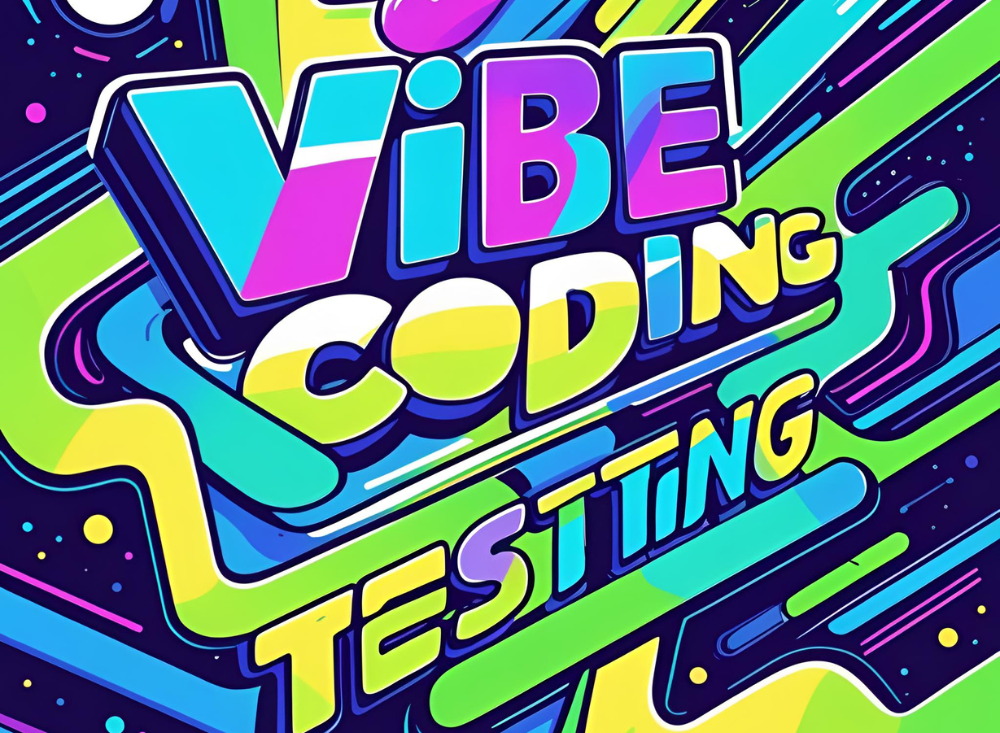
The emergence of AI-driven approaches like vibe coding and vibe testing has transformed how software is developed and validated. By leveraging tools like GenQE, developers and testers can create and verify applications using natural language and intuition, making software creation more accessible and efficient. This blog explores what vibe coding and vibe testing are, the technology powering vibe coding, the role of vibe testing, and how GenQE enhances these processes.
What is Vibe Coding?
Vibe coding is an AI-assisted development approach where developers describe their desired application functionality in plain language, and AI generates the corresponding code. Instead of writing every line manually, developers guide the AI through natural language prompts, focusing on the “what” rather than the “how.” GenQE makes vibe coding seamless by interpreting prompts, generating functional code, and allowing iterative refinements without requiring deep coding expertise.
Key Features of Vibe Coding with GenQE
- Natural Language Input: Describe app features in everyday language, and GenQE translates them into code.
- Rapid Prototyping: GenQE generates functional prototypes quickly, ideal for testing ideas or building MVPs.
- Iterative Development: Refine AI-generated code through GenQE’s feedback loops, adjusting based on user needs.
- Accessibility: GenQE enables non-developers to create software by simplifying the coding process.
The Engine Behind Vibe Coding
Vibe coding relies on advanced AI technologies, with GenQE serving as a powerful engine to drive the process:
- Large Language Models (LLMs): GenQE uses sophisticated LLMs to interpret natural language prompts and generate code in languages like HTML, CSS, JavaScript, or Python.
- Prompt Engineering: GenQE processes vague or specific prompts, such as “build a login page” or “create a dashboard with charts,” to produce accurate code.
- Code Generation and Optimization: GenQE generates structured code and suggests optimizations, ensuring functionality aligns with user intent.
- Feedback Integration: GenQE allows developers to provide feedback (e.g., “make the button larger”) to refine code iteratively, maintaining control over the output.
GenQE’s ability to handle complex prompts and generate reliable code makes it an ideal tool for vibe coding, enabling both beginners and experienced developers to focus on creativity and problem-solving.
What is Vibe Testing?
Vibe testing is an intuition-driven testing approach where testers rely on their instincts and experience to explore software, identifying issues that feel “off” without strictly following predefined scripts. Unlike traditional testing, vibe testing emphasizes user experience and real-world interactions. GenQE enhances vibe testing by combining human intuition with AI-driven insights, automating exploratory tests, and validating software behavior.
Key Features of Vibe Testing with GenQE
- Intuitive Exploration: Testers use GenQE to interact with the application, flagging issues based on gut feelings.
- AI-Assisted Validation: GenQE analyzes application behavior in real-time, confirming or quantifying intuitive observations.
- User-Centric Focus: GenQE simulates real user scenarios, ensuring the software feels seamless and intuitive.
- Flexible Testing: GenQE adapts to dynamic test scenarios, making vibe testing ideal for rapidly changing applications.
Tools for Vibe Testing
GenQE is a standout tool for vibe testing, offering features that complement its intuition-driven nature:
- Real-Time Feedback: GenQE monitors application performance during testing, providing instant metrics on issues like slow load times or UI glitches.
- Pattern Recognition: GenQE identifies recurring issues, such as inconsistent UI elements, helping testers validate their instincts with data.
- Exploratory Test Suggestions: GenQE suggests additional test scenarios based on observed application behavior, guiding testers to uncover hidden defects.
- Automated Reporting: GenQE generates detailed reports with performance data and visual snapshots, making it easy to document and share findings.
- Natural Language Test Creation: Testers can describe test scenarios in plain language, and GenQE generates and executes corresponding test cases.
Example with GenQE
For a vibe-coded e-commerce app, a tester might notice sluggish checkout performance. Using GenQE, they describe the issue in natural language (“test checkout speed”), and GenQE runs performance tests, identifies bottlenecks, and suggests optimizations, all while documenting findings for stakeholders.
Conclusion
Vibe coding and vibe testing, powered by GenQE, represent a paradigm shift in software development and testing. Vibe coding allows developers to create applications quickly using natural language, with GenQE translating ideas into functional code. Vibe testing complements this by enabling testers to explore software intuitively, with GenQE’s AI-driven insights ensuring reliability and user satisfaction. By embracing GenQE for both vibe coding and vibe testing, teams can accelerate development, enhance quality, and deliver user-friendly software with confidence. Start vibing with GenQE to transform your development and testing workflows today!